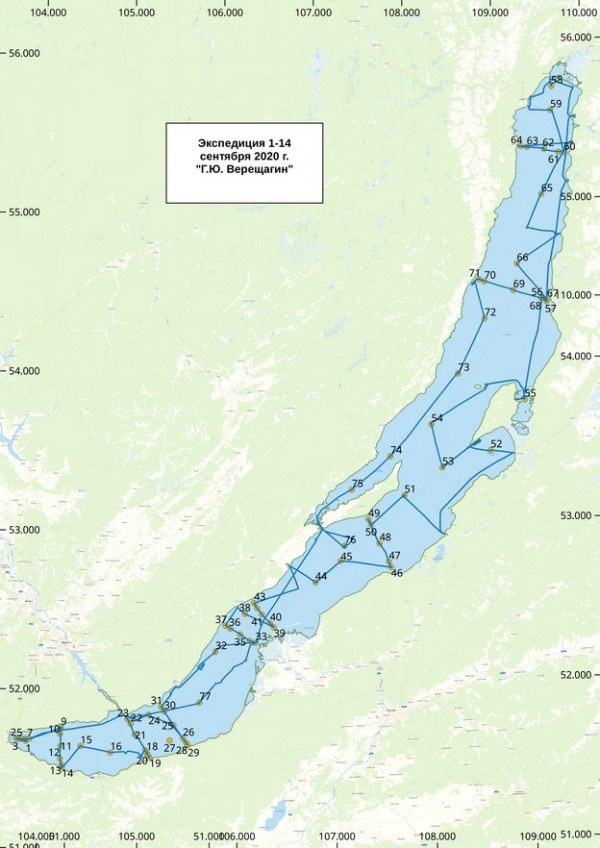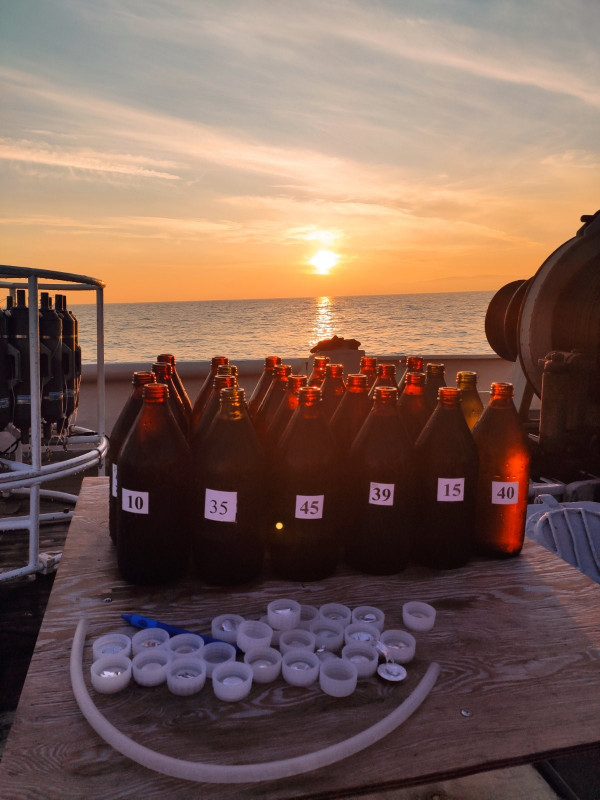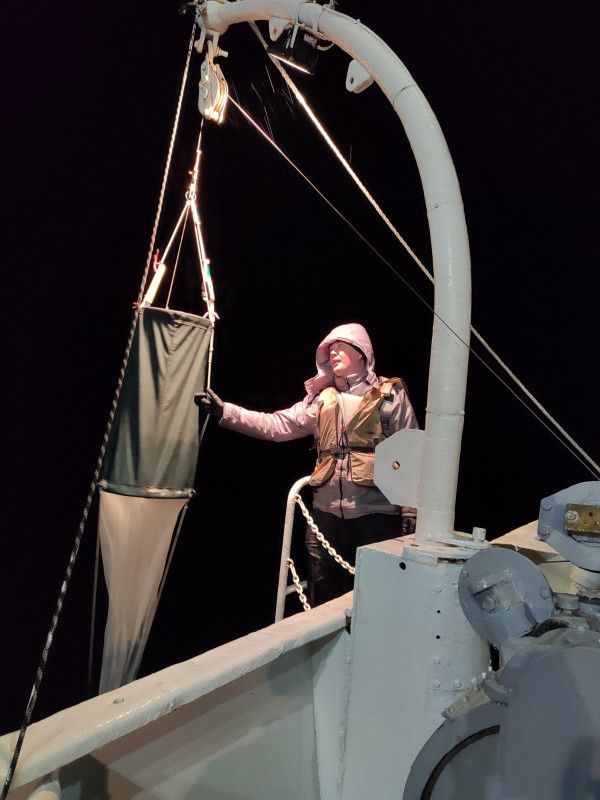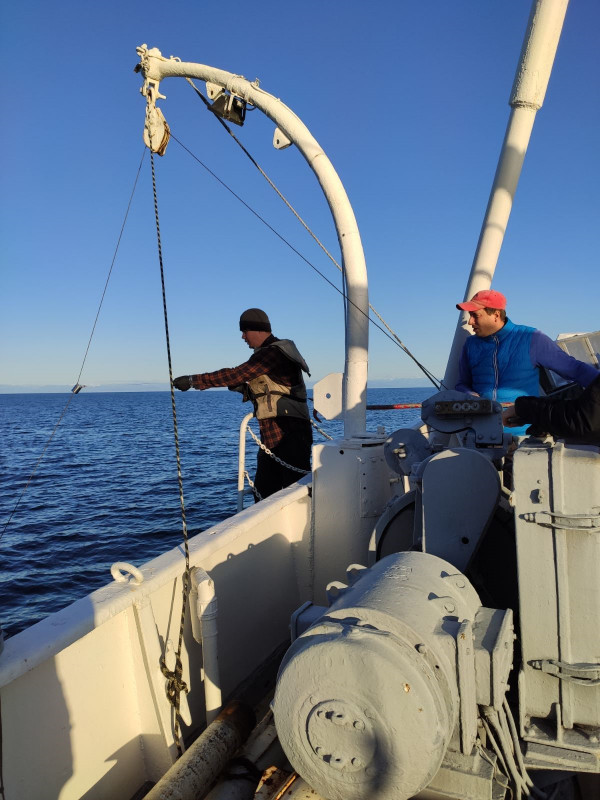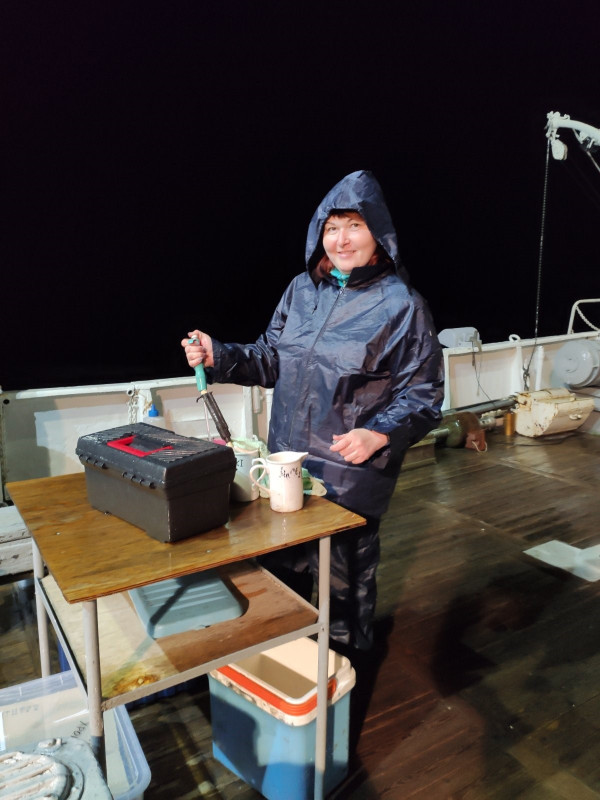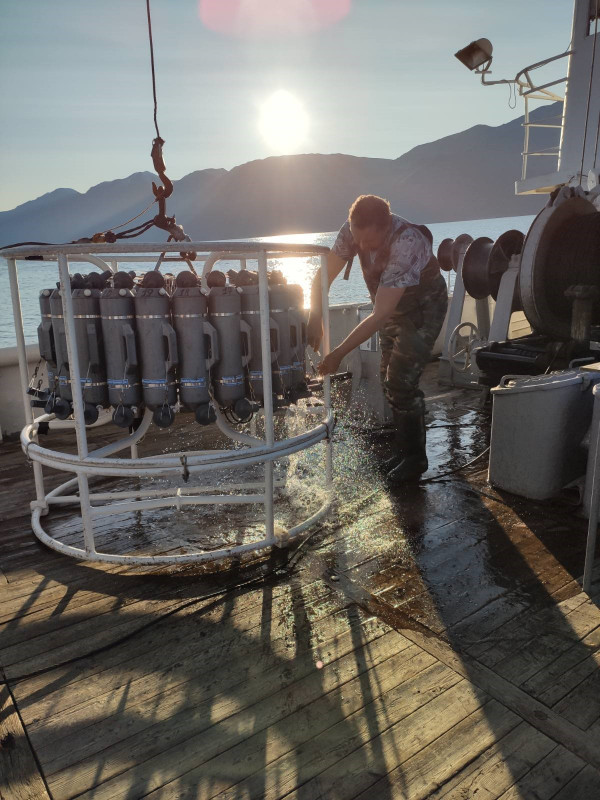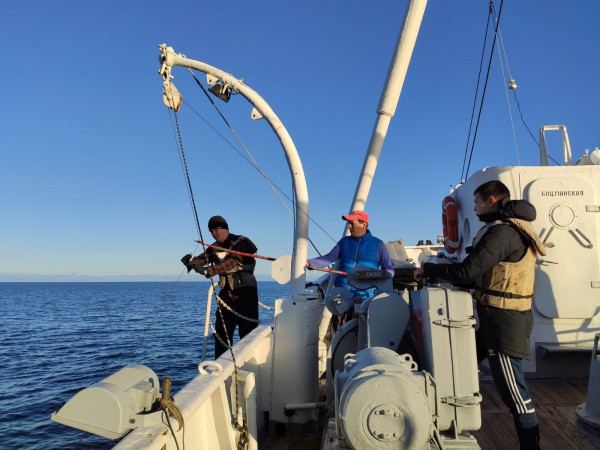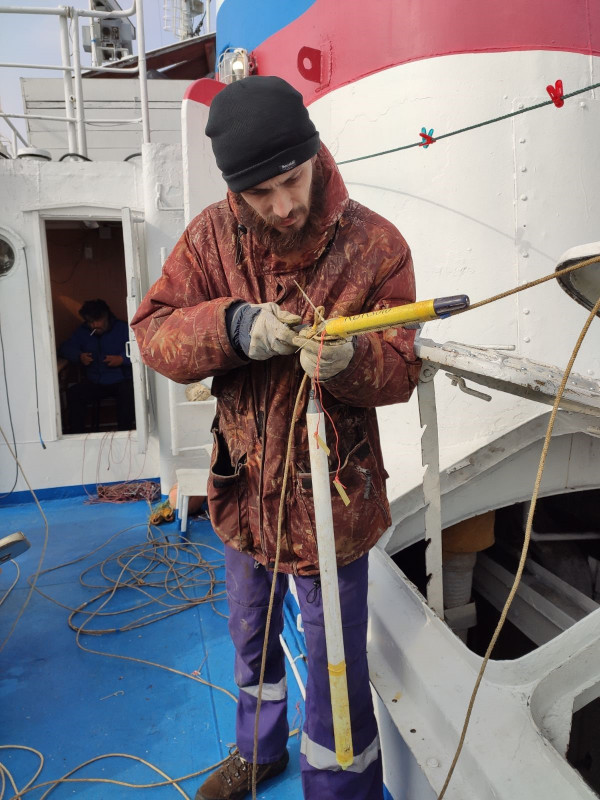Comprehensive round-Baikal expedition onboard the RV “G.Yu. Vereshchagin” from September 17 to October 1, 2020
Comprehensive expedition within the programs “Assessment and Forecast of Ecological Condition of Lake Baikal…”, “Microbial and Viral Communities…” and “Studies of Evolutionary, Environmental and Molecular Biological Aspects…” was carried out onboard the RV “G.Yu. Vereshchagin” throughout the water area of Lake Baikal.
The aim of the expedition was comprehensive monitoring of abiotic and biotic components of the Baikal ecosystem to identify the pattern of their spatiotemporal dynamics as well as to study mechanisms and processes that affect the distribution and cycling of matter in the water column.
During the expedition, samples were taken along the standard grid of stations at fixed layers from the surface to the bottom using a Carousel SBE-32 Water Sampler equipped with 25 bathometers of 5 l each. Water was sampled for chemical, microbiological and metagenomic analysis as well as to study the distribution and species composition of phytoplankton. Phyto- and zooplankton samples were taken with the Juday net. Fieldworks were carried out in three basins of the lake as well as in Barguzin and Chivyrkuy bays and in the Maloye More Strait. Water was sampled at 32 stations; the Juday net was used at 26 stations. Water samples for hydrochemical and microbiological analysis were taken from 11 rivers: the Selenga, the Upper Angara, the Barguzin, the Buguldeika, the Goloustnaya, the Anga, the Sarma, the Turka, the Tompuda, the Rel, and the Kichera. Hydrophysical measurements were conducted at 77 stations using an SBE-25 high-precision CTD probe with additional sensors for dissolved oxygen and transparency.
Along the RV route, the surface water temperature was recorded, and seepages of gas bubbles were monitored using a hardware and software complex based on the Furino echo sounder with a recording of echogram data.
At the final stage of the expedition, additional comprehensive fieldworks were carried out at the site of the earthquake (the Kultuk settlement) that occurred on September 21, 2020. Based on the CTD probing, turbid layers were identified in the water column of the lake. Moreover, the layers with elevated methane concentrations were detected.





